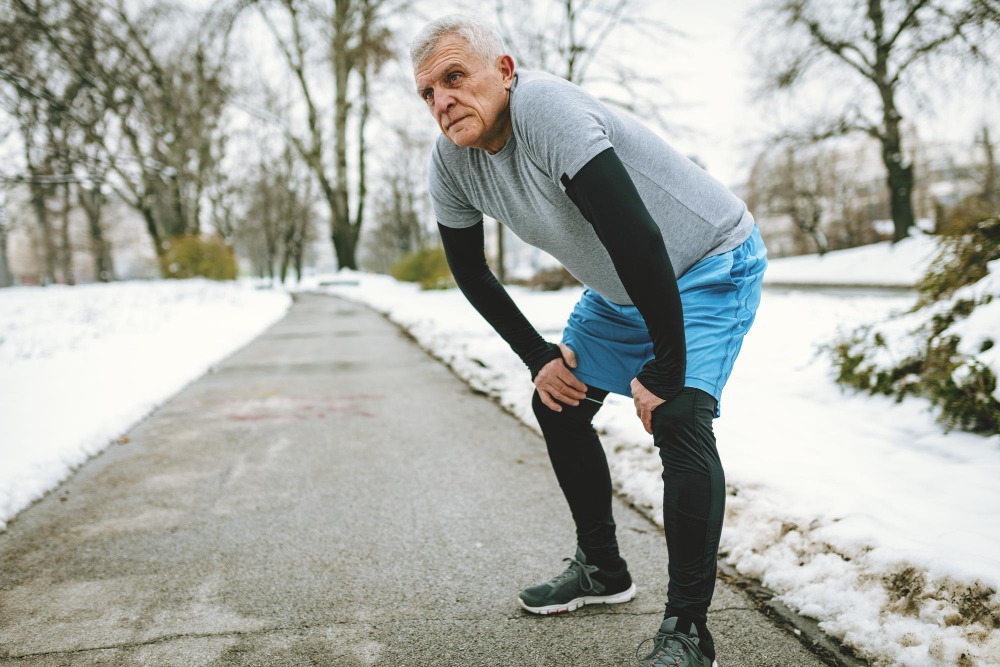Arthritis is a condition where your joints get inflamed and feel very painful. Though this condition is normally associated with aging, there are different kinds of arthritis - with the most common one being osteoarthritis due to wear and tear and poor repair mechanism at work in the body. Pain is usually much more severe in the rainy and cold seasons. So, staying warm and continuing to move is the only way to deal with it. After all, summer is just a few months away, right?
Why Joint Pain Is Worse In Winter
Arthritis is the most common joint-related condition that over 22-40% of the Indian population deals with. The numbers keep increasing every year. Let us look at the reasons for greater pain in the cold winter;
● The chill in the air can translate to tighter muscles and joints- which means more stiffness for you
● The air pressure also changes, leading to your joint tissues expanding - which means more joint pain and pressure.
● When it is cold, our joints are more reactive than usual, which can worsen matters.
● Low levels of humidity mean lesser moisture and more friction when it comes to joint movement.
● People are generally more inactive during the winters when compared to the summers. This can make matters worse.
Tips For Better Pain Management -
Now that you know the main reasons for the increase in severity of symptoms and pain, we have listed out a few measures for you to work with-
● You should dress warm- This means you need to master the art of layering- wear a shirt or top, a sweater, and then a jacket with a scarf to keep your neck warm. You could consider wearing socks, gloves, and a muffler to keep the cold air away. Wearing socks has the added advantage of keeping your heels free from cracks.
● You can wear knee pads ankle pads or compression clothing, to help support your joints better.
● You should always have a hot bath or shower, but the water should not be scalding hot either. Skin texture can change drastically and feel too sensitive and itchy with this season.
● You can consider getting warm oil massages- especially for the back, feet, shoulders, and knees. This will keep you pain-free and also help with better mobility.
● You should prioritize exercise now more than ever- with more pain and less range of motion, you should not stop movement completely. Instead, talk to your doctor or physical therapist for modified exercises. Also, you should be able to do them at home, with no specialized equipment. Doing yoga, indoor walking, running or walking on a treadmill, going swimming in a heated pool, dance classes, etc - should be okay since you will be indoors and not exposed to the elements.
● You should pay attention to what you eat too. Continue to eat healthy meals full of fresh produce and whole spices, less fat, and more fiber - as this kind of diet is anti-inflammatory in nature.
● Less sunlight can mean Vitamin D deficiency- which is bad for bones. So, talk to your doctor about supplementation as necessary. You could also just do a simple blood test to check for Vitamin D levels, before supplementing.
● Lastly, try to stay as stress-free as possible, by doing yoga and meditating. Practice sleep hygiene and mindfulness whenever possible. This will also help you sleep better.
There are some lifestyle changes you should make this winter if you have not been particular about following a schedule otherwise.
Conclusion- There is no cure for arthritis, which is why managing it becomes very important. If you stay warm, continue to exercise, eat and hydrate properly, and don’t stress too much, you should be okay. If your symptoms get really bad, it is time to talk to a doctor for specialized treatment. Arthritis is normally diagnosed with simple blood tests and a detailed physical examination, after taking your medical history. You may be given medication to manage the pain or for better joint health. Your doctor should be able to help you out with whatever concerns you may have, regarding the condition.
FAQs
1) Why does joint pain get worse in the winter?
Changes in temperature and lower air pressure can cause your joints to swell, placing pressure on the joints when you try to move them. Also, the fluid gets thicker in consistency, which is why poor lubrication can reduce range and ease of motion.
2) How do I keep my joints feeling warm?
You can give your affected joints a hot oil massage every day, use knee pads or caps for better stability, and dress warm always.
3) Can diet influence arthritic pain?
Yes, eating food with spices like pepper, turmeric, and whole spices and hot soups like bone broth or vegetable soup can give you much-needed antioxidants- all of which are good for your cells and help reduce inflammation in the long run.
4) What kinds of exercises are good for the joints in winter?
All low-impact exercises are good for you- so yoga, stretching, swimming, walking, and cycling are all good for you as they can be done indoors.
5) When should I talk to a doctor?
When your quality of life suffers and you are not able to stick to your daily routine because of the intense pain, you should get medical help.




